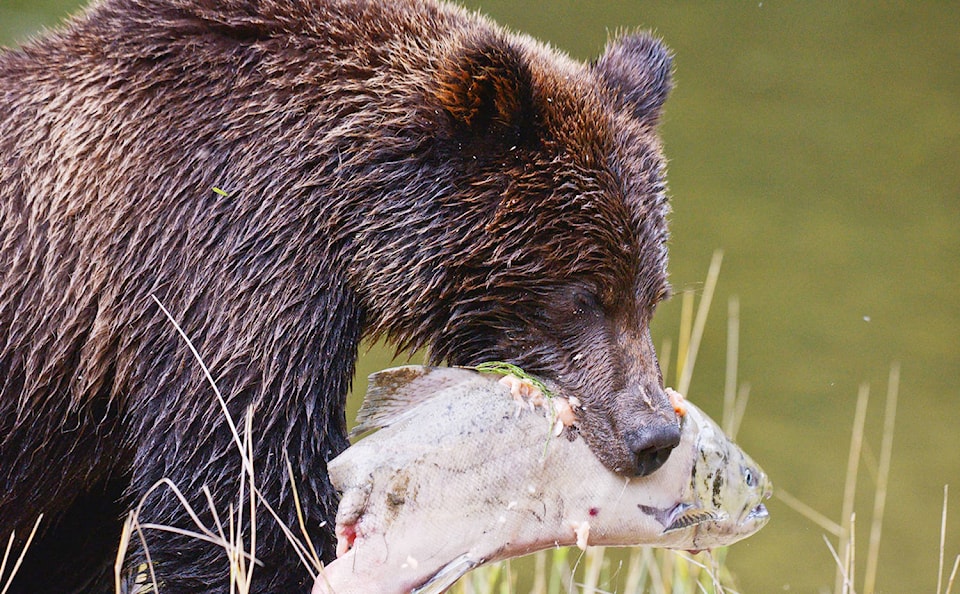It’s no fun waking up to find your fruit trees trashed or your fish tub raided by a hungry bruin. Unfortunately, fall is the time that this is most likely to happen, and the Conservation Officer Service has undertaken a province-wide project that is focusing on increasing enforcement as well as education.
“The province-wide project started on September 5 and will run into next spring,” said local Conservation Officer Hana Anderson. “The reason is because there is still an extremely high amount of conflict over attractants. This creates unsafe situations for humans and bears are being destroyed as a result.”
Anderson said that the COS has already received more calls this spring and summer than the entire season last year. The majority of those calls came in between mid-July and mid-August, and while bears are currently eating salmon in the creeks Anderson is expecting activity to pick up once they move off the streams and back into town.
“Fall is the busiest time for the COS, as it overlaps with hunting and fishing as well as animal activity,” explained Anderson. “We are concerned that bears will return to residential areas to seek food once the salmon run is finished.”
Anderson said that enforcement is one of the tools that is available to Conservation Officers, but that each situation is different and there is no particular order officers use when confronted with an issue.
“We are hoping people will be proactive and work to secure their attractants before the bears begin returning to residential areas,” said Anderson. “It’s also really important that people dispose of game meat and trimmings away from areas frequented by people.”
Bears are currently entering a phase known as “hyperphagia.” Hyperphagia is an increase in feeding activity driven by a biological need to fatten up before bears go in to den for the winter, as once they enter the den they go without food and water for months. This can drive bears to seek out high-caloric food such as fruit.
Education and resources are key messages from the COS when it comes to managing attractants. Vanessa Isnardy, provincial co-ordinator of WildSafeBC, which works closely with the B.C. conservation officers — said securing attractants will become increasingly important in the coming months.
“We are heading into a very active fall when bears consume 20,000 calories a day, on average,” she said.
WildSafeBC also has resources to help homeowners to manage and secure their attractants, and there are also electric fences available on loan through local representative Fraser Koroluk.
Anderson said that so far this year the COS has destroyed seven bears: six grizzlies and one black. Bear mortality in the Valley has been high this year, with five grizzly bears also dying in conflict with local residents for a known total of eleven bear fatalities this year.
“The COS destroyed two very sick old boars and a boar that was exhibiting very aggressive behaviour; as well as a family unit of a sow and two cubs,” said Anderson. “Two boars were shot by residents and there was also the case of the sow and cubs that were struck by a vehicle on Thorsen Road.”
Visit the WildSafeBC website at wildsafebc.com for more information on how you can protect your property and secure your attractants.
